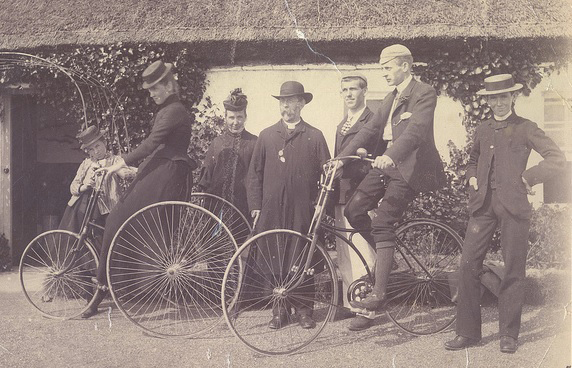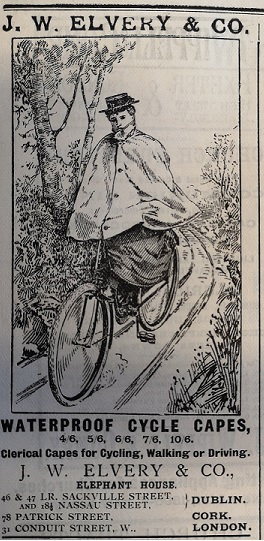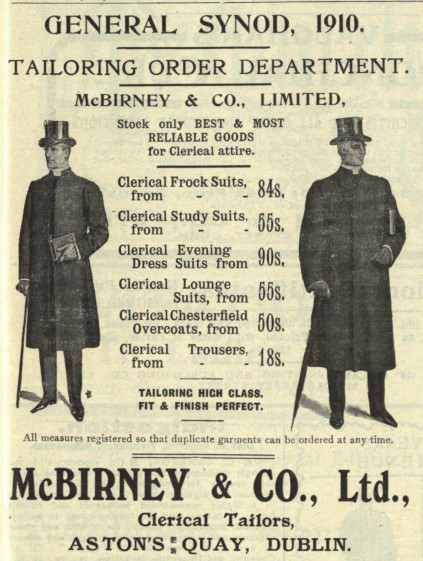‘News Behind the News’ from the Gazette
The Church of Ireland Gazette – the Church’s weekly newspaper since 1856 – was written and read by lay and clerical members among others. It provides the longest-running public commentary on its affairs, and as such recognised as a valuable primary source for understanding the complexities and nuance of Church of Ireland and indeed wider Protestant identity, as well as the Church’s contribution to political and cultural life throughout the island.
Dr Miriam Moffitt once again provides her thought-provoking and forensic analysis to reveal how the advent of cycling, which came into its own as a means of transport towards the end of the 19th century, impacted the Church of Ireland directly, with many of its clergy swiftly taking to the bike from the early 1890s onwards.

Dr Moffitt reveals how Church of Ireland clergy were quick to spot the usefulness of the bike beginning to cycle around their parishes from the early 1890s onwards. This followed the introduction of the ‘Rover bicycle’ c. 1885, with its equal-sized wheels and robust chain, coupled with John Dunlop’s development of the pneumatic tyre in 1888 giving rapid rise to the use of the bicycle as a means of transport in all walks of life, including the ordained clergy. Indeed, for some, the bicycle was embraced as ‘a heaven-sent machine’ which cost less than a horse and covered the ground more quickly. TheGazette began to publish advertisements for bicycles and cycling lessons. Bikes soon began to feature regularly in accounts of parish activities and, as early as 1892, the parishioners of Mariners Church in Kingstown even presented one to their rector as a gift, for whom “the bicycle is a heaven-sent machine to him under such circumstances; it costs less than a horse and gets over the ground more quickly”.
Not everyone was completely happy with this trend; a few considered it unseemly that clerics should cycle at all, but many were more concerned about that they should wear. The Gazette of 2nd January 1891, for example, insisted that it was inappropriate for clergy to cycle to church dressed in surplice, stole and hood, which makes us wonder if they had formerly ridden on horseback fully attired for service, or whether they travelled in some form of carriage or cart: “One cannot help feeling that it would be a more decent method to carry one’s surplice, stole and hood over one’s arm, and put them on in open church … than to be seen hurrying along the road in them, perched on top of a bicycle”.

As the traditional long black coat proved cumbersome on a bike, cycling clergy began to wear short shooting jackets to the dismay of some who claimed they were “coming in ‘as a flood’ and, horror of horrors, they were even worn in colours other than black” (Gazette, 23rd September 1892). The donning of shooting jackets by clergy, would, however, continue. Indeed, while advertisements for distinctively clerical attire continued to appear in the Gazette, their incidence declined by the early 20th century. Thus, whilst changes in clerical fashion were not wholly attributable to the advent of the bicycle, the practicalities of cycling forced clergy to make decisions regarding clothing and that these decisions reduced the distinctiveness of clerical tailoring.
The uncovering of this unusual aspect of social history once again confirms the usefulness of the Church of Ireland Gazette (the Irish Ecclesiastical Gazette to 1900) as a resource for historical research over the last 150 years. A combination of central church funds, private sponsorship and support from the Commemorations Unit in the Department of Culture, Heritage and the Gaeltacht (for specific aspects of the decade of commemorations period) have to date ensured that all editions of the Gazette between 1856 and 1949 are now freely available for searching through the Church of Ireland website, at this link: https://esearch.informa.ie/rcb

This leaves just 54 years of editions (from 1950 to 2004 – when the Gazette became available an e-paper) to complete the digitization process and make it a fully and freely searchable resource for a worldwide audience. Prospective sponsors of this final 50-year phase of work are invited to contact the Library, or consider making a donation to the Library Conservation Fund here: http://bit.ly/2sG5qDn